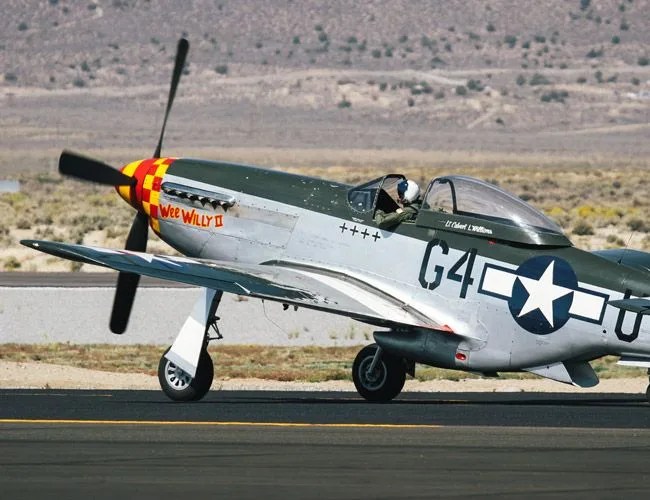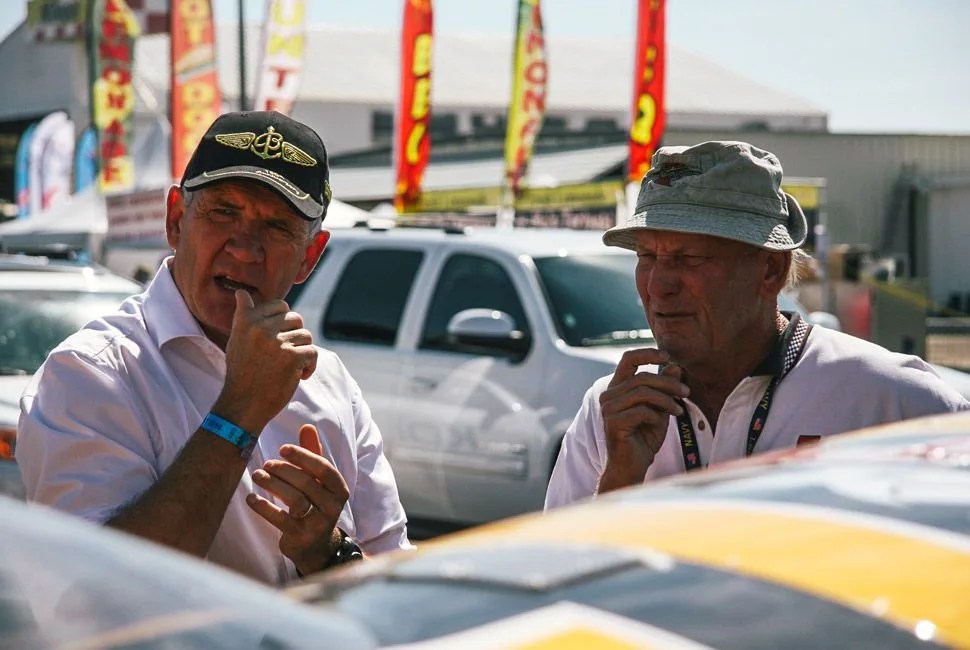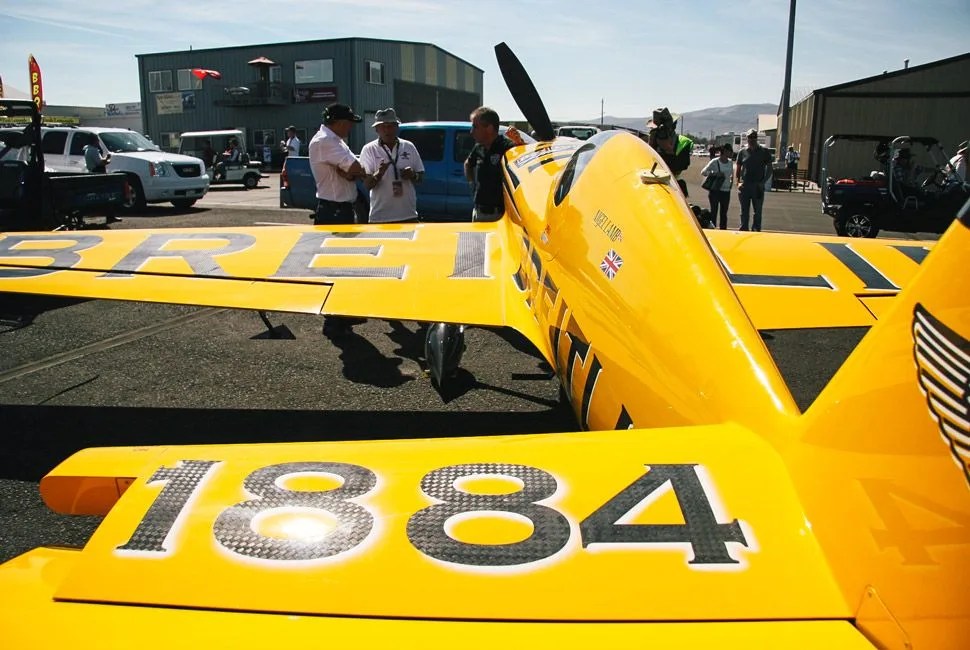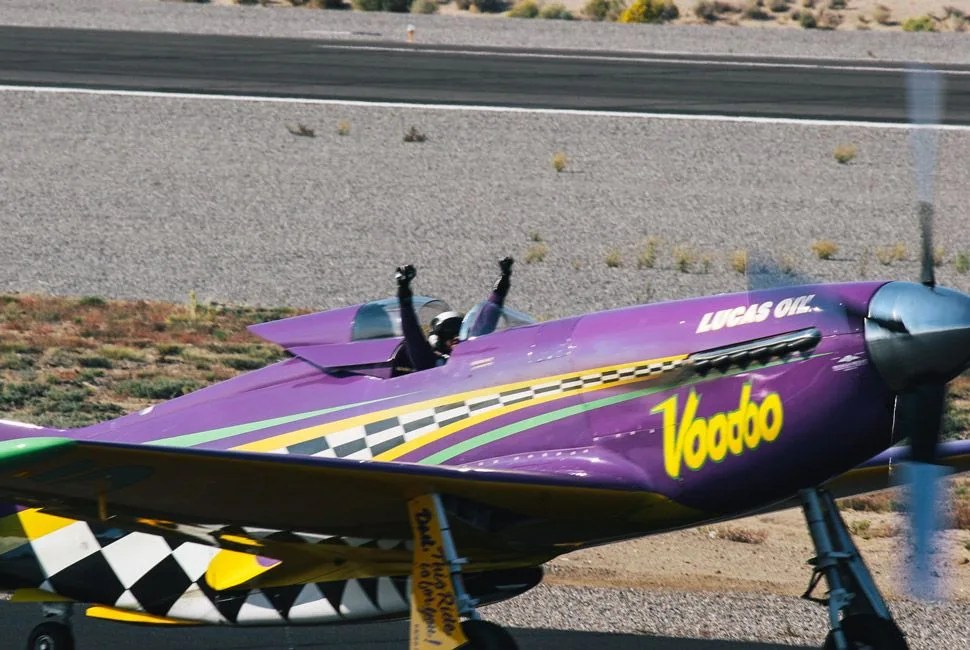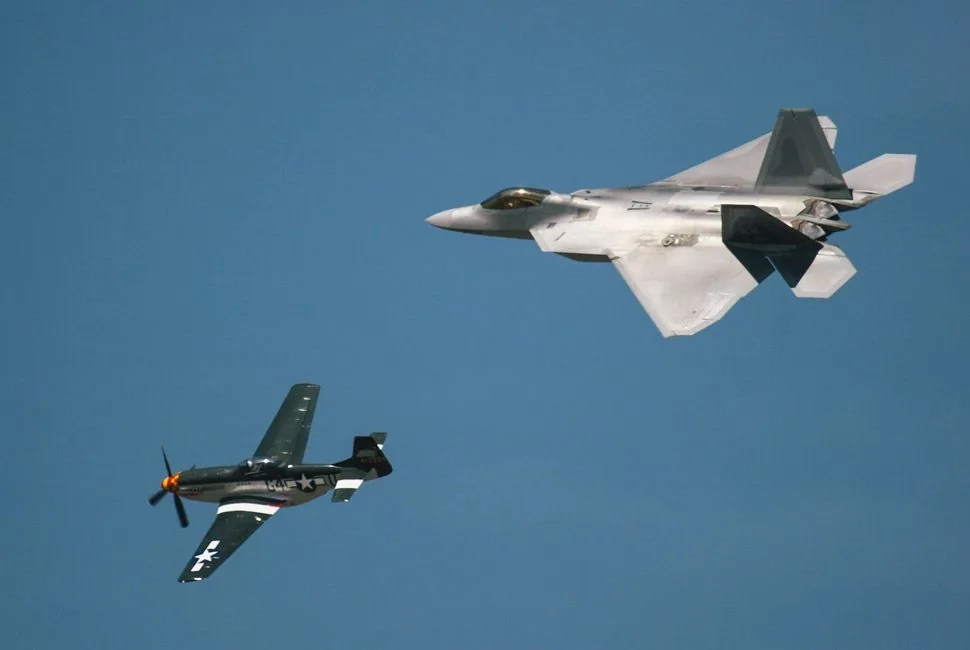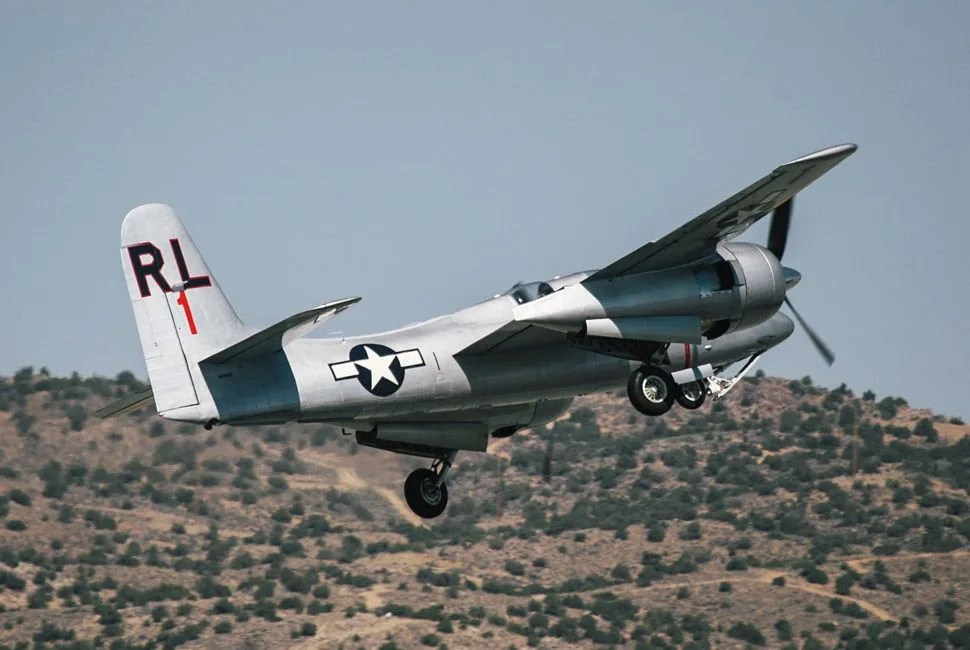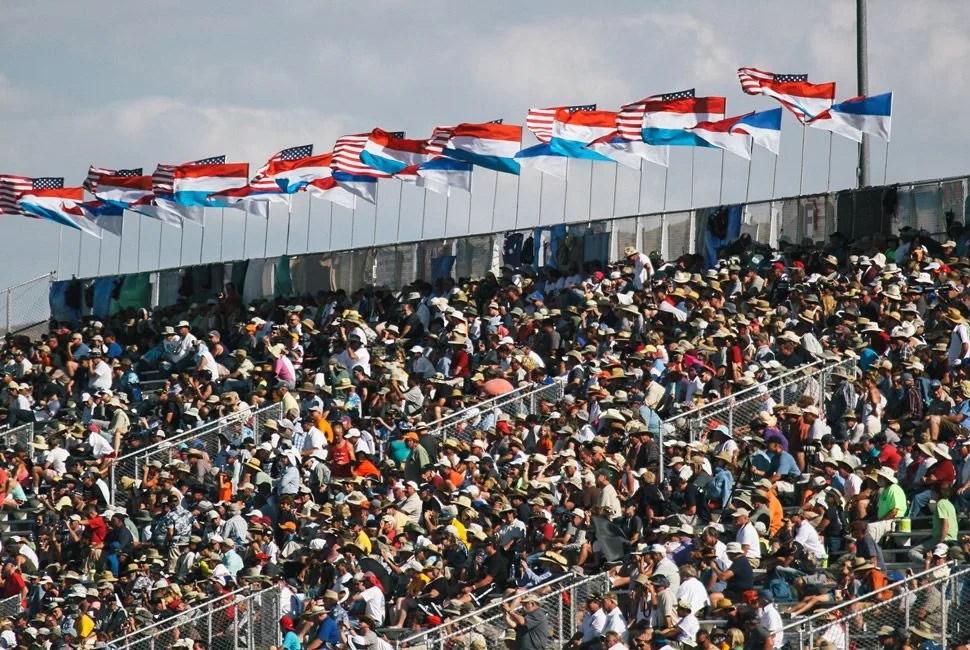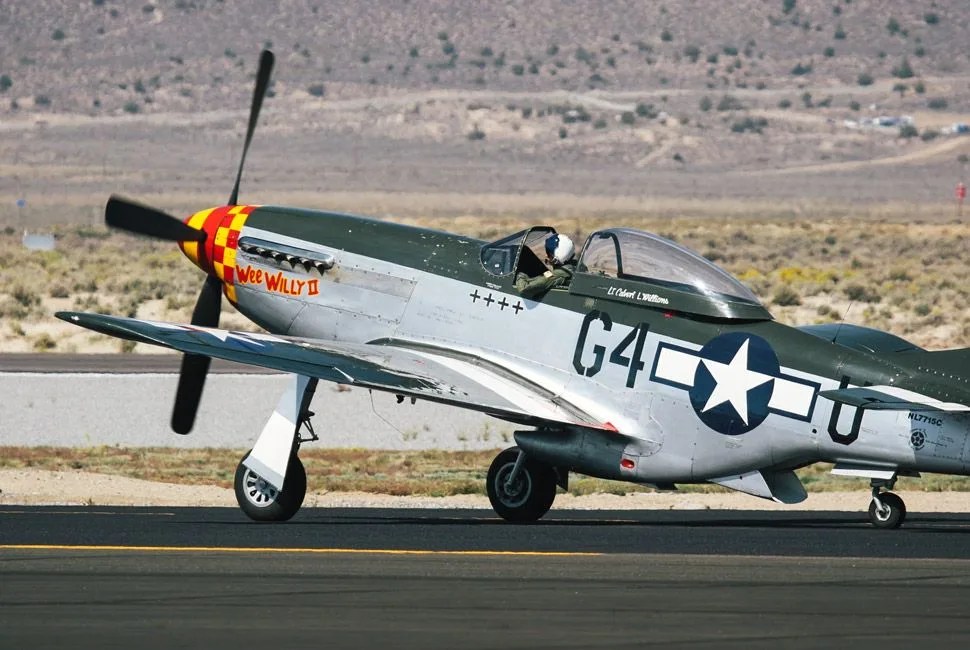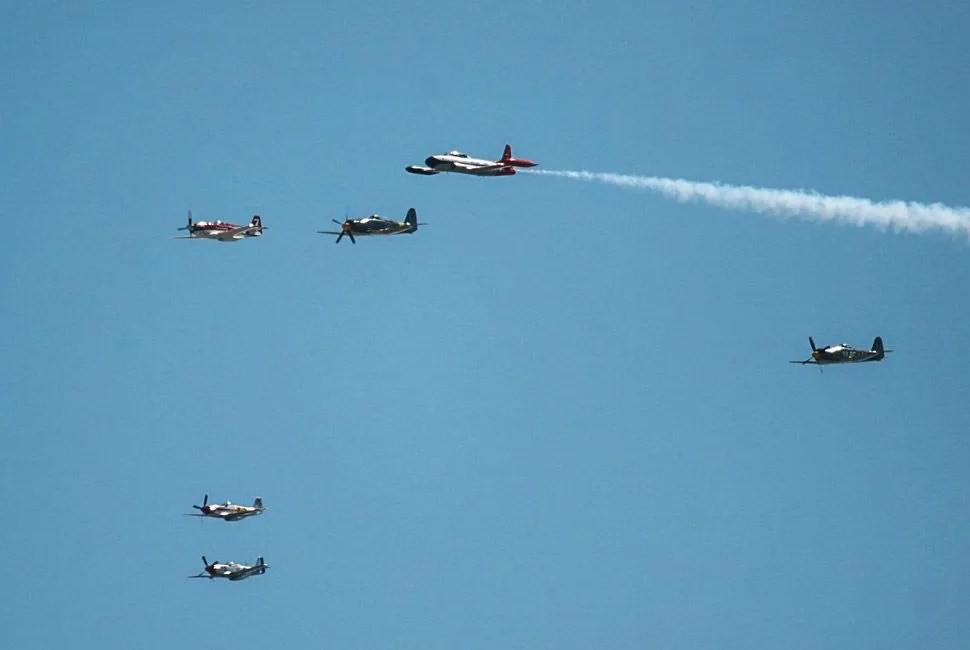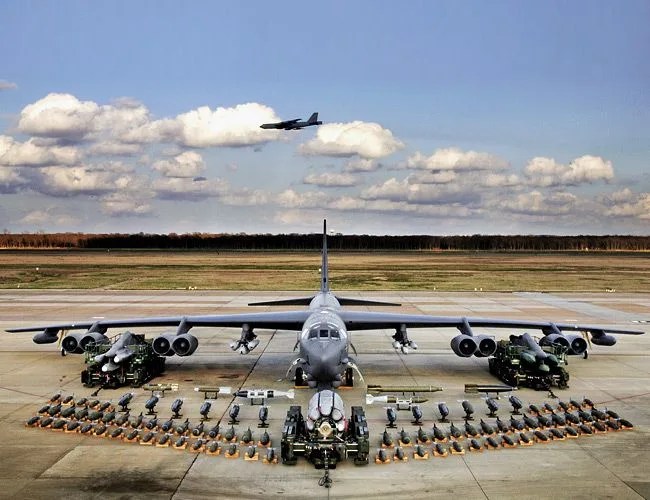14 photos
On September 15, spectators at the 51st National Championship Air Race in Reno, Nevada witnessed a gut-wrenching photo finish. But their thrills were outclassed by the tension Steve Hinton Jr. endured in the cockpit as he went head to head with Bill “Tiger” Destefani, his former mentor. Thousands came to their feet and roared as two of air racing’s fastest, most highly-modified P-51 Mustangs screamed past the home pylon at 500 mph in the closest race at Reno in more than two decades. As the pilots pulled their racers skyward, up and off the race course, neither was sure who had won. Below, the thousands in the stands continued their howled excitement.
MORE HIGH FLYERS: History of the B-52 | Testing Three Drones | Decrypted the State of Drones in America
It was one of the most dramatic moments in more than a century of air racing, which was first organized in 1909 in Rheims, France. As aviation has evolved, so has air racing. Point-to-point cross-country races were staged in Los Angeles and Belmont Park, Long Island in 1910, and in Europe at events like the much-ballyhooed Schneider Cup seaplane races in 1913.
WWI halted the rise, but U.S. air racing blossomed in the 1920s with the advent of the Pulitzer Trophy Race, established by newspaper magnate Ralph Pulitzer, in which nearly 40 pilots, mostly military, flew military and ex-military aircraft through four laps of a 29-mile course. Like pre-WWI air racing, competitions like the Pulitzer Trophy were proving grounds for cutting-edge aviation technology and ace pilots.
By the 1930s, the “golden age of air racing” dawned at the National Air Races in Cleveland, Ohio. Advanced civilian machines performed alongside American military craft; race pilots were among America’s popular heroes, cheered by the hundreds of thousands who attended the National Air Races annually. WWII would again suspend air racing, but the sport resumed in Cleveland in 1946 with pylon and cross-country racing. Classes included the Goodyear “Midgets” (the forerunner of today’s Formula One class), AT-6s (ex-WWII trainers), Jets and what would become today’s Unlimited-class (the propeller-driven fighter aircraft that won WWII).
Then, in 1949, pilot Bill Odom lost control of his P-51 Beguine during the headlining Thompson Trophy race. He crashed into a house near the race course, killing himself, a mother and an infant. The tragedy shut down the National Air Races and halted multi-class pylon air racing for the next 15 years.
